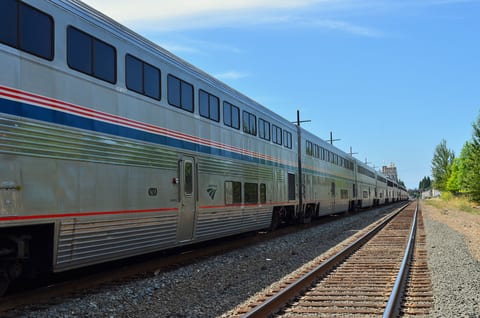
Amtrak’s High Speed Train to Bankruptcy
David Williams
August 24, 2012

The word, “Amtrak,” can best be described as one of the most wasteful, inefficient components of our government. For as long as most can remember, Amtrak has maintained its inability to turn a profit. Additionally, passenger travel on Amtrak only accounts for less than one half of 1 percent of all interstate travel. And despite attempts to privatize, Amtrak continues to exist as a huge black hole that mercilessly robs taxpayers.
So when news recently broke about an Amtrak plan that will cost taxpayers several billion dollars, $151 billion to be exact, there’s good reason to pause and be concerned. The latest proposal is a plan to build a high-speed railway that will connect all of the major cities in the Northeast from Boston to Washington, D.C. Similar to previous attempts to expand Amtrak’s reach, this program will also end in taxpayer disappointment.
While Amtrak’s status of a public-private partnership makes the situation complicated, that’s not an excuse for Washington to do nothing. Congress can and should not succumb to Amtrak’s pleas and instead work to completely privatize Amtrak. Each day Congress allows these generous subsidies to continue is a day they are failing taxpayers. A recent example demonstrates that not only does taxpayer money go to waste; taxpayers actually end up being penalized for the shortcomings of Amtrak.
Representative John Mica (R-FL) recently held a hearing that revealed the costs of Amtrak’s food service. A statement from his office explained that while “Amtrak’s food and beverage expenses in 2011 were $206 million, it only took in $121.5 million in revenue from the sale of items.” Rep. Mica elaborated, “Last year, taxpayers subsidized Amtrak’s money-losing food and beverage operations by $84.5 million. This means that Amtrak has to spend $1.70 to bring in just one dollar of revenue.”
Given these conditions, it is nothing short of galling for some to propose that additional tax dollars be spent to finance a $151 billion project. Furthermore, as an article in The Fiscal Times explained, “there’s no easy way to predict the economic benefits of these projects. That’s because, when it comes to high-speed rail, ‘economic benefits,’ are apparently difficult to define, making the sales pitch for any high-speed rail project almost as difficult as building one.”
Those who support building this railway contend that the long-term benefits far outweigh the initial costs. If the economic and other benefits are as wonderful as the proponents of high-speed rail claim, then that’s all the more reason that the private sector should be salivating at the opportunity to lead the way on this project. But on the other hand, if it isn’t, that’s a telltale sign that the project may not be all its cracked up to be.
The wrench in the proponents’ logic is that the private sector has not shown tremendous interest in building the high-speed rail. Additionally, it’s all too often the case that when the private sector refuses to sign on to a project because it’s considered a bad investment, the government steps in and turns to the taxpayers. Forcing them to foot the bill regardless of whether they supported or wanted the project at all.
The discussion here is not about whether the technology is worth it or about whether the project will ultimately succeed or fail. Instead, it is about whether taxpayer dollars should be used to fund it. How can the proponents of this new endeavor rationalize robbing the taxpayers of more of their hard earned money to be used on a project that the private sector could very well finance if it chose to do so?
